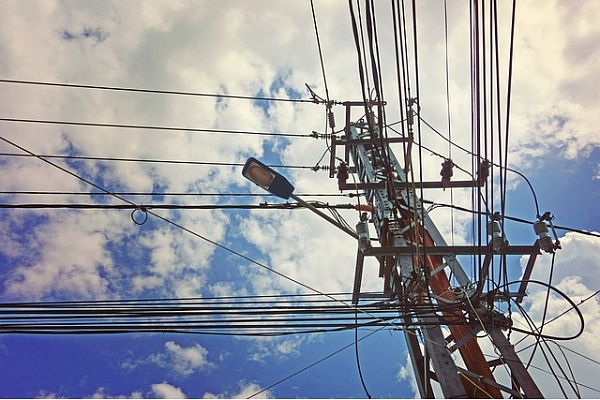In 2015 the power market was liberalized for households in Latvia, allowing new players to show up and present competitive offers to customers. In April 2017 liberalization of the natural gas market will take place, providing for the end of JSC Latvijas Gāze natural gas utility’s monopoly rights and opening of the market.
Energy and utilities sector in brief:
• Power market has been de-regulated since 2007, and for households since 2015.
• There are a number of power suppliers in the market, biggest of them are JSC Latvenergo and Enefit Ltd, a Latvian subsidiary of Estonia’s Eesti Energia. Power to households is sold by nine companies - JSC Latvenergo, 220 Energija, Baltcom TV, Win Baltic, Aeon Energy, Lattelecom, Foodcom, Bright Future Energy, and EKS Sistēmas.
• 65% of Latvian residents use centralized heating services.
• There is just one player in the natural gas supply and distribution market – JSC Latvijas Gāze.
• The state’s long-term energy goals are sustainable energy and security of energy supply. Latvia has resolved by 2020 to reduce greenhouse gas emissions by 20% compared to the level of 1990, increase share of renewable energy in total energy consumption by 20% and increase energy efficiency by 20%.
• According to latest data, the share of renewable energy among total energy consumption in Latvia reaches 38.7%.
Competition grows in open power market
Power
• Energy is a small segment of the country’s GDP, nevertheless, it is vitally important in the national economy.
• The electricity market for legal entities in Latvia has been deregulated since 2007, and for households from the beginning of 2015. Since the start of 2015, households can buy electricity from five companies, and from 2017 already nine companies offer power supplies. Customers can buy electricity at either fixed prices or at prices of the Nord Pool Spot exchange. Still, the majority of households choose to stick with their previous electricity supplier, therefore Latvenergo still has the largest market share.
• Despite the fact that Latvia’s electricity market has been formally fully liberalized, Latvenergo’s biggest rival decided not to offer electricity supply services to households, indicating significant market limitations. Enefit said that the current legislation for power suppliers operating in the household market includes a number of requirements for the service level and product offer that contradict the open market principles and require additional investments. At the same time, also companies with core operations in other sectors start engaging in the power market. TV and internet service provider Baltkom TV added power supplies to its services. In 2017 also Lattelecom e-services provider started selling electricity, and its competitive advantage is that there is no subscription fee and no fine for breach of the agreement included in its offer.
• This year’s power prices will be affected by differentiated power tariffs of Sadales Tīkls power distribution network adopted last year that provide for a fixed subscription fee for all consumers. The power price hike will be compensated for socially less protected groups. The Public Utilities Commission is also revising the tariff project submitted by Augstsprieguma Tīkls power transmission system operator, providing for a tariff hike at 8-13%. The estimated costs in the new tariff plan would grow 10%. Increase of costs will be due to higher staff costs, reduction of revenues from provision of additional services, and increase of other costs. The amount of transmitted power is projected to grow 3%
• Changes in the electric power market was introduced also by Lithuania’s power links with Sweden and Poland opened in December 2015. Operation on the bourse has been successful. According to experts, in 2016 the Baltic power market has demonstrated a significant infrastructure development, and, thus, the average electricity price in Latvia has dropped by 13.1%. However, there are still concerns that the winter without snow and increase of oil prices pose risks for electricity price hike in 2017.
Natural gas supplies
• There still is just one company on the Latvian natural gas supply and distribution market – JSC Latvijas Gāze, while shareholders in the company changed in 2016 as E.ON Ruhrgas that used to hold a 47% stake in JSC Latvijas Gāze sold 28.97% of shares to Marguerite Fund established by six leading financial institutions in Europe. E.On Ruhrgas has been renamed to Uniper Ruhrgas International GmbH and will keep 18.26% of shares, Gazprom holds 34% and Itera Latvija holds 16% in JSC Latvijas Gāze.
• In order to perform duties related with liberalization of the natural gas market, Conexus Baltic Grid that will take over natural gas storage and transmission functions from Latvijas Gāze was established in 2016. Its largest shareholders are the same as Latvijas Gāze shareholders. With the exception of financial investor Marguerite Fund, the shareholders have to dispose of their shares in Conexus Baltic Grid by the end of 2017 so that the new shareholders would not be related to Latvijas Gāze.
• Like in the power market, also in the open natural gas market companies will be able to trade with natural gas. In early 2017, six companies registered in the Register of Natural Gas Suppliers - Latvijas Gāze, Enefit, AJ Power Gas, ESK Sistēmas, and Frenzo.
Renewable energy resources
• Renewable energy sources take an important place in Latvia’s balance of energy sources. The main renewable energy sources in Latvia include biomass (wood) and hydro resources, also – to a lesser degree – wind power, biogas, hay and other biomass are used. Renewable energy sources accounted for 38.7% of Latvia’s final energy consumption. Latvia has set itself the goal of increasing this proportion to 40% by 2020.
• Since 2010, power capacity of cogeneration plants in Latvia has risen 7.9 times, and reached 126 MW in 2015, up 5 MW from 2014. The power produced by cogeneration plants has grown 11.6 times since 2010 to 765 GWh in 2015, which is by 96 GWh more than in 2014. In 2015 electric power production from renewable energy sources reached 2,772 GWh, which is about the same as in 2014.
• In the past ten years electric power production in wind power plants rose from 47 GWh to 147 GWh, production in biomass plants and cogeneration plants increased from 6 GWh to 378 GWh, and production in biogas cogeneration plans rose from 36 GWh to 387 GWh.
Waste volume grows
In Latvia, most waste ends up in landfills, although large part of it may be recycled. In 2015 the amount of waste disposed in landfills decreased – from 709.6 tons in 2014 to 571 tons in 2015. The volumes of produced waste also dropped – from 2.01 million tons in 2014 to 1.91 million tons in 2015. The amount of collected waste has declined – from 1.82 million tons in 2014 to 1.8 million tons in 2015.





